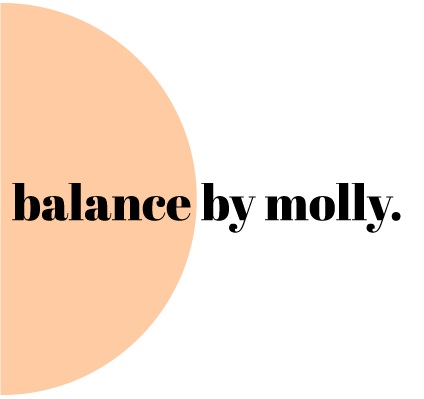Guest Post written by Hande Mirel of Let’s Start Pilates
__
I used to think a “real workout” meant spending hours at the gym and dripping in sweat until you’re out of breath. I'd tear myself apart with long, intense workouts to see results. I would DREAD working out.
My name is Hande. I am a certified Pilates teacher and the creator of Letsstartpilates.com, based in the beautiful San Francisco. I'm far from a perfectionist, but I spent years thinking that I had to follow a plan perfectly, do exercises perfectly, never skip a workout, never have an "off" meal, etc...in order to be fit and healthy.
As a result, I found myself grinding away at the gym, gasping for breath as I forced myself to perform high-intensity workouts. I’d spend hours scrolling through “fitspiration” accounts on Instagram, drinking in images of women with perfect physiques and gorgeous bodies. The addiction only served to fuel my own self-limiting beliefs. It was unhealthy. Self-sabotaging. And it certainly weighed on my mental health.
So, what changed? I discovered a way of moving my body that works for ME through the power of Pilates and how impactful intuitive movement could be.
What is Intuitive Movement? Moving in a way that feels good to you. Tuning in and listening to exactly what your body and mind are craving and whatever movement would honor you in that moment.
What is Pilates? Pilates is a form of exercise designed for enhancing strength, flexibility, and body awareness. Pilates offers plenty of benefits to your body like a stronger core, better posture, improved spinal health, stability, and overall better well being through the use of precise, low impact movements with breath control.
After integrating intuitive movement into my Pilates practice, for the first time in my life, exercise felt like I was giving my body and mind the self-love (not self-punishment) they deserve. My focus shifted from losing weight and looking “skinny” to feeling GREAT inside. It was no longer about having a “bikini body,” six-pack abs, or counting every single calorie. Instead, it was all about my mood and a holistic approach to my overall health.
Flipping this mental switch taught me to be kind to my body and work with it, not against it. And looking better on the outside became a natural result of these efforts. I call this exercise freedom. Here is how you can practice intuitive movement and achieve exercise freedom.
3 WAYS TO HAVE EXERCISE FREEDOM AND PRACTICE INTUITIVE MOVEMENT
1. Do a Self Check-in before working out
Have you ever taken a moment to pause and reflect on how you are feeling that day and what your body is craving before a workout? We like to treat movement like it’s another thing on our endless to-do lists. Like it’s something you dread but “should” do? Like there’s no in-between? No healthy balance? Why are we forcing ourselves to wake up at 5am in the morning to do a HIIT class when our body needs rest or a more gentle movement?
For this tip, I want you to do a self check in before and after your workouts. Ask yourself these questions: “What does my body need today?”, “What type of movement do I feel like doing?”, or “What type of exercise would be most beneficial to my body today?” Some days this may mean you do an intense spin class, while other days it may mean restorative pilates or a short walk. Intuitive movement is flexible, not rigid, and gives you the space to explore what feels good in your body.
2. Shift Your Reason for Movement
Who the heck feels good and positive about their body 100% of the time? I mean, let’s be real here. Some days you feel good about your body, some days you don’t – but every day you can respect your body. This is why I think we should unlink exercise from weight and dieting and focus on taking care of your body, mind, and health.
For this tip, practice shifting your motive for movement. When that “should” voice pops up (“I should exercise more to lose weight…”) take a moment to pause and ask yourself why? Do this with kind curiosity. When our motivation for movement is extrinsically motivated, ie as a way to look a certain way, we’ll forever be stuck in the on-again-off-again loop with exercise. There are so many “better” reasons to move your body. Do it because it brings you joy, gives you energy and strength, improves your mood, grounds and comforts you, or something else you might need in this moment. Simple, but not easy!
I decided to take this unique and transformative approach to Pilates after witnessing how impactful it was in helping others have a better relationship with their body and exercising. By adopting this mindset, you’ll never feel like you’ve “failed.”
3. Be Aware of Your Triggers
Triggers can appear in a medley of different ways. Maybe you have a body-shaming friend or aunt. Or, maybe an influencer on social media feels compelled to share her “fat burning” workout routine. Whatever the case may be, be aware of what triggers you. Yes, I realize it’ll be tough. But, it can also be life-changing. Protect yourself by increasing your awareness and creating an environment that’s empowering rather than cynical.
There are going to be times in life where you feel down in the dumps. And that’s okay – no one is perfect. When you feel like you’re sliding towards a dark place, talk yourself into a safer, kinder mindset. It may sound silly, but you’d be pleasantly surprised how something as small as telling yourself, “ Diet culture is capitalizing on my insecurities. The perfect body? Doesn’t exist. I will not let the fitness (or food) industry dictate my life. I choose to trust my body here, not them.” Not only are you speaking the truth, but you’re prioritizing self-love, which is crucial for your well-being.
Embracing this new mindset will help you to stay consistent for the long haul. It will help you to break old habits that used to hold you back so that you can become the healthy, happy, and strong woman you want to be. When we stop criticizing, judging, and disrespecting our bodies, we can finally start to transform.
Want to experience the transformative power of Pilates in a safe and empowering community? Start Your 7-Day Free Trial of The Pilates Club Now!
--
Visit Hande’s Online Pilates Programs: https://www.letsstartpilates.com/
Connect with Hande on IG: www.instagram.com/letsstartpilates



